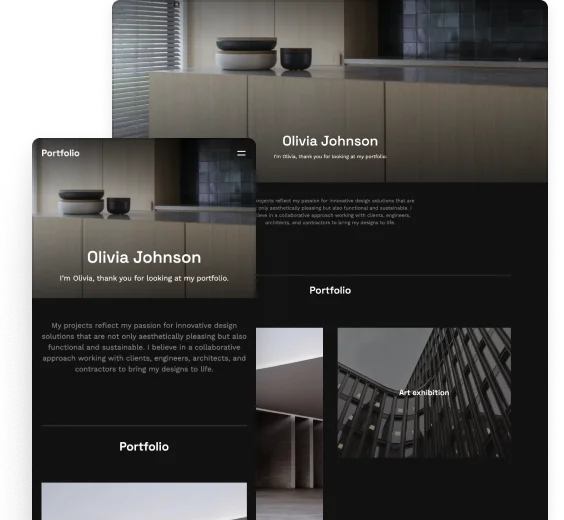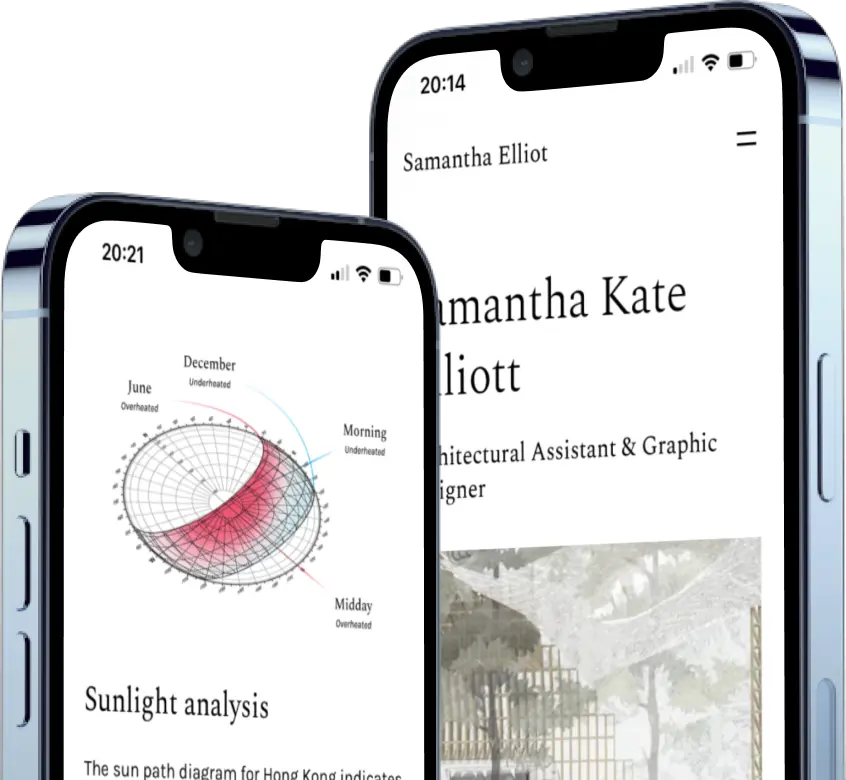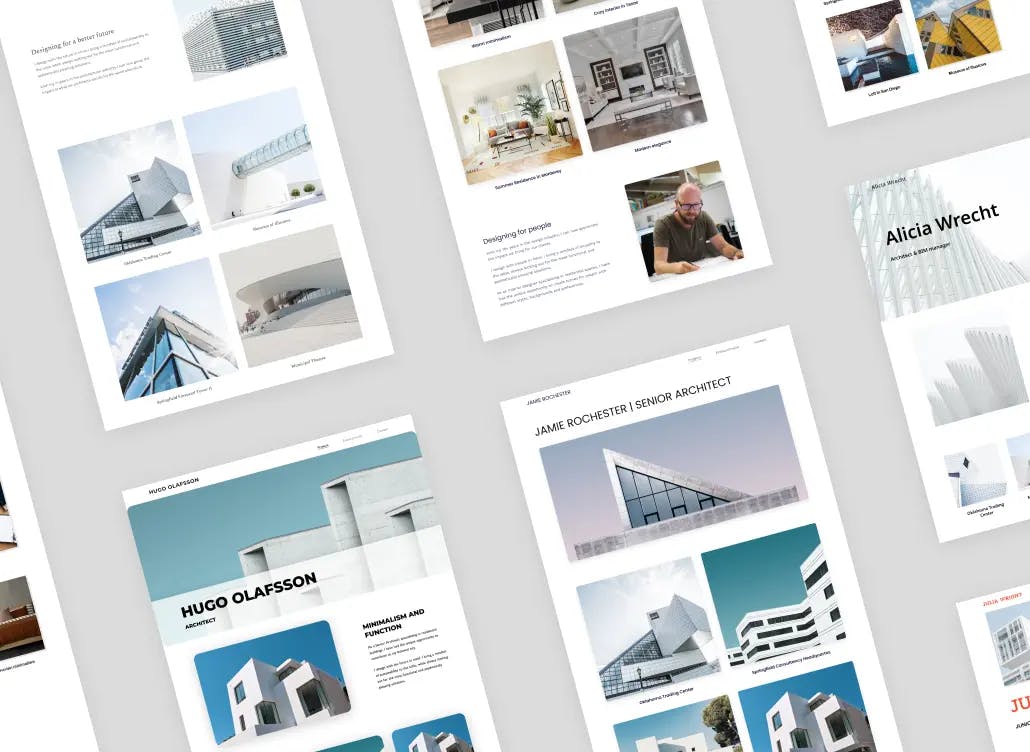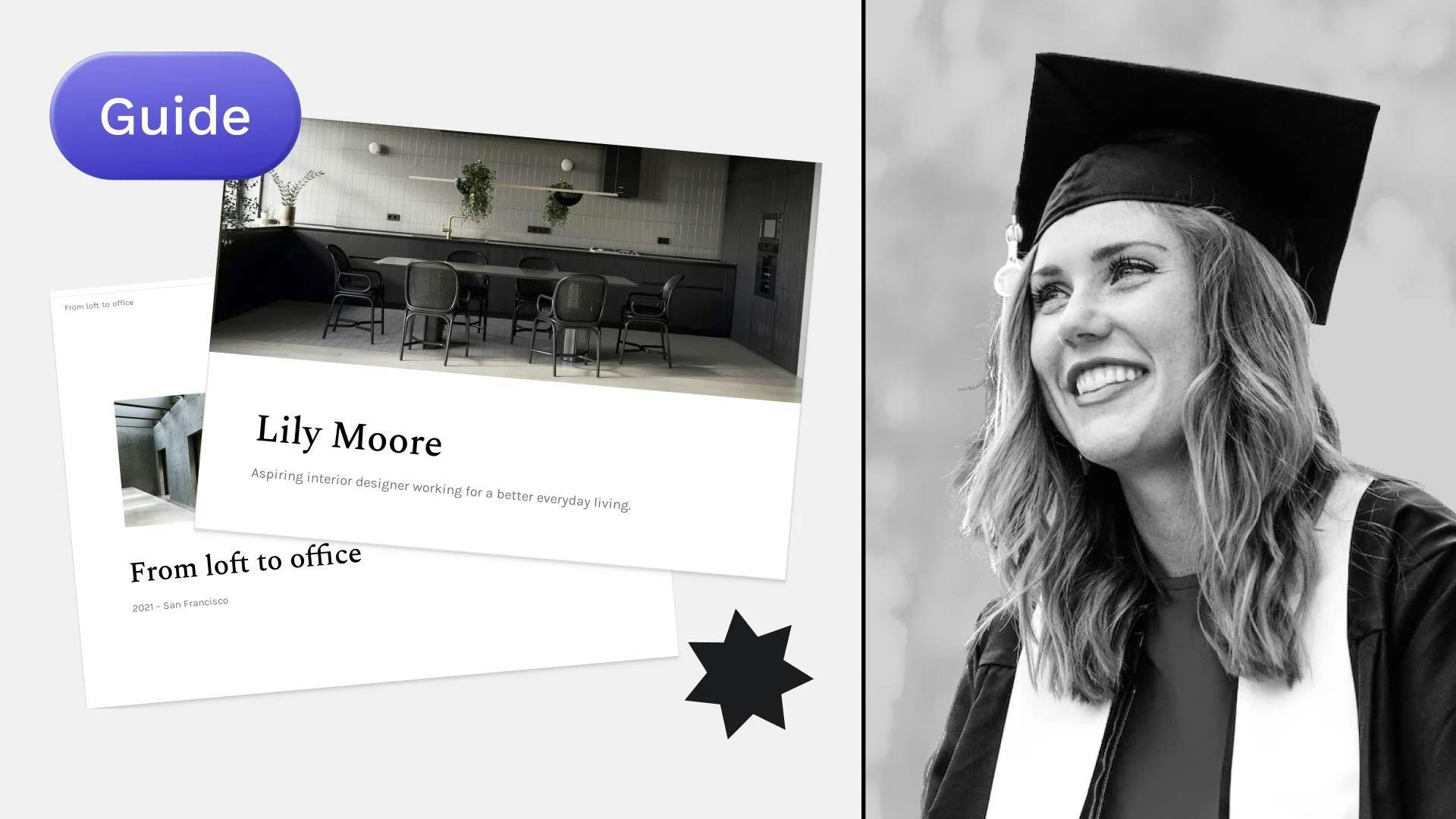
How to Become an Interior Designer – Career Path & Tips
Thinking about how to become an interior designer? No matter if you’re just starting out or you have your degree (or even your license) under your belt, figuring out your next move can be tough.
No wonder… Your next step could turn your passion into a full-fledged interior design career. And though getting there might have its ups and downs, we’re here to make it easier for you.
First, let’s get some things out of the way…
What is an Interior Designer?
Interior designers plan and create functional, safe and aesthetic indoor spaces for clients from all walks of life. Interior design combines art, construction and human behavior.
What Does an Interior Designer Do?
Though it’s a very diverse profession, generally interior designers…
- get a client brief, learn what the space will be used for,
- gather inspiration, create moodboards,
- communicate their ideas (often with hand sketching),
- create functional floor plans,
- adhere to building codes,
- plan aesthetic spaces,
- create renderings, and internal elevations,
- choose finishes and furniture,
- communicate with contractors, source special materials,
- oversee the construction projects.
To just name a few of the tasks they perform daily.
What’s the difference between interior designer and interior decorator?
While interior designers may do the whole process from start to finish, interior decorations come into the picture near the end. Decorators usually don’t have the license to take part in the construction, rather they specialize in finishes, decor and the aesthetics of a space.
These two professions are closely related, yet we shouldn’t use them interchangeably.
What Do You Need to Become an Interior Designer?
Becoming a professional interior designer requires more than just creativity. You need a special set of skills, formal education and a way to present yourself. Let’s take a look at one at a time and see what you need to work on.
1. Education
In order to become a licensed interior designer, you need a BA degree. If you’re not yet ready to commit to a BA degree, an Associate degree may be enough to get your foot in the door and get a job as a drafter or associate designer and then later climb up the corporate ladder.
You need to find an accredited college if in the future you’d like to have your license (more on this topic later). So, make sure to choose an institution with the future in mind.

Among other things you’ll learn about space planning and traffic flow, color theory and psychology, sustainable design principles, lighting, materials, and furniture design.
2. Portfolio
No matter which stage you are in your career, you will always need a portfolio. That’s a fact.
If you want to get a degree, land your first internship or job, or find clients, the portfolio will always be the first step. So get on with it, make it up-to-date, unique, and modern.
Lucky for you, Archifolio will guide you through the process of creating an interior design portfolio website. Thanks to our what-you-see-is-what-you-get editor and our customizable templates, you’ll have a portfolio that you’re proud of in no time.
3. Skills
The skills you need to master as an interior designer have a lot to do with visual communication. It’s because in your career, you’ll need to be able to convey your message to people with different backgrounds and professions. But let’s take a look at the skills you’ll need in depth.
CAD software
The use of outstanding renderings make up for a big chunk of the work of an interior designer. Clients that don’t have any experience with construction will have a hard time imagining the space just from a floor plan. You need to create renderings to show how the space will look like.
While most CAD softwares may seem daunting at first, trust us, it’s rewarding to give yourself time to master them. In your career, you may get to a point where you can outsource this task, but who knows? You might like it so much that you’ll be the one specializing in renderings. Plus, it’s important to consider that many senior designers can’t be bothered with CAD softwares, so acing this skill may be useful when you want to land your first job.
What’s more, a good rendering can make your interior design portfolio stand out from the crowd. Most schools put a big emphasis on getting to know softwares like AutoCAD, Revit, Rhino, or ArchiCAD.
Sketching
Just like renders, hand sketches are all about visual communication. And while renderings give a detailed look of what the clients should expect, sketching helps us to get our ideas across on the spot. What’s more, sketching can also come in handy when talking to contractors.
Once you start working on a project, you should have a basic concept of what you’d like to design in detail. Sketching out your ideas first can save you a ton of time. If you start designing in a CAD program without having the big picture in front of you, you may find yourself lost in the details. Whenever you finish sketching something, make sure to document it. These raw ideas reveal the brilliance of an interior designer and therefore should have a place in your portfolio.
Client management
No matter if you are employed in a firm or you’re working freelance, talking to and managing clients are part of the job. This requires good listening, understanding, and presenting skills.
The hardest part by far is to read between the lines of the client brief. They may not be able to communicate exactly what they want, but you have to figure it out anyways. That’s when you can see the true value of sketching and renderings.
Organization
An interior design project is not finished in a day. Following through requires great organization skills and the ability to keep deadlines, – sometimes even to make other people keep deadlines.

If you work as a freelancer, this skill is even more important. When it comes to getting clients, you need to be (and look) as organized and professional as possible. For this reason, you need to have an interior design website that looks put-together and neat. If you’d like some guidance on this, check out Archifolio, which is a website builder specifically for you, interior designers and architects.
Project management
An interior design project requires multiple people working together, in a set order that cannot be mixed up. Planning the process, making sure that everyone knows what they have to do and how they should do it is often the job of the interior designer.
Aesthetic Flexibility
As a person who has the design eye, you probably also have a favorite style. What’s tricky is that all the stars need to be aligned so that you’re hired for a project in your favorite style with the perfect space to do it in.
Thus, you need to be able to fully grasp what your client would like to have, without your preferences getting in the way. There are situations where solely your design eye should be trusted, but at the end of the day, client satisfaction is what you’re going to get paid for.
Knowledge of materials & technologies
Learning what type of materials, fabrics work perfectly for any given space is critical. There’s no way to get around it. You should know how the indoor claddings and coverings are installed, how the chosen materials’ wear and tear is, what lighting structures work well for which function to just name a few.
As you go on in your career, most of these things will be self-explanatory, but in the beginning there will be a lot of Googling around. Try visiting some specialized stores as there will most likely be an expert who can help you out.
Staying up-to-date with the latest trends and technologies is also a must for all interior designers. You can’t create a trendy interior if you have no clue about what makes it trendy.
Knowledge of building codes
Safety matters should be a constant consideration. Not just when it comes to planning the floorplan, but also when you think about how your design will be used.
Just to give you an example: When you’re designing a bathroom for a residential project, you should not only consider where the electric outlets will be in relation to the shower, but also where the cleaning products will be kept to make sure that they’re out of kids’ reach.
Color theory & psychology
Color theory is important in every design profession, but for interior designers it’s crucial. Diving into the psychological aspects of colors will help you design better and more livable spaces.

Clients may tell you what their favorite color is, but don’t let them fool you. They may think they’d like a vibrant yellow color on all walls, but you will know better.
4. Passion
Having a degree, a stunning interior design portfolio, all the necessary skills are, however, not enough if you aren’t passionate about interior design. It can be seen in your designs if you don’t love what you’re doing.
What’s more, as you progress in your career, you should find something in the huge realm of interior design that you like the most. This will become your specialization and something you can stand out from the crowd with.
Career Path of an Interior Designer
Are you wondering how to become an interior designer step by step? Let’s take a look at the career path of interior designers.
How it usually works:
1. Completing your Bachelor’s Degree in Interior Design
As we mentioned before, getting your BA or Associate degree will help you loads when you start your interior design career. Even if we disregard the value it brings to your resume, in these few years you’ll learn most skills needed, you’ll make friends and expand your network – that can be priceless when you’re looking for an internship.
2. Getting an Internship
Internships are a way to get your foot in the door. As an entry-level designer, you may find it hard to get employed right away. Firms usually have high standards and want to hire people that can already make money for them. That’s why internships are so essential.
Universities give you resources and an overview of the processes, but you’ll lack experience upon graduation and that can’t be taught in school. So getting an internship is the way to go.
Getting an internship largely depends on your portfolio. So go ahead and start working on it today!
3. Working as an Entry-Level Interior Designer
After you’ve finished your internship and have your degree under your belt, your main goal should be getting even more experience.
Roles you may look out for are for example:
- drafter/CAD project designer,
- interior design assistant, or
- junior interior designer.
Before you apply to these roles, you should add your projects you’ve worked on during your internship to your portfolio, thus you’re showing real-life works of your own. Just make sure that the projects aren’t under NDA.

4. Getting Your License
To call yourself a certified interior designer, you need to have your license. It’s a great way to further improve your skills, have more job opportunities and have credibility with your clients.
The most well-known interior design license in the US is the NCIDQ (National Council for Interior Design Qualification) license issued by the CIDQ (Council of Interior Design Qualification).
To get the license you need:
- an adequate degree,
- experience in the design field,
- an understanding of state-specific legislation, and
- the NCIDQ licensing exam.
5. Becoming an Interior Designer
Once you have your license, you have more job possibilities and it’s easier to get a job as an interior designer. You have different options:
Working at a multinational company
While working at a huge firm, you’ll definitely have the chance to perfect certain skills. However, you won’t be able to manage a project from start to finish. Nevertheless, you’ll have set processes and other people from different departments to work with and learn from.
Working at a small design studio
You’ll learn much more about client and project management in a smaller firm, but you might not have enough time to work on your other skills as it may get hectic in a smaller firm. You will, however, work in teams and get a ton of valuable experience.
Going freelance
If you’re ready to start your own business, you will oversee the whole project, get an insight into every little detail – whether it’s client related or construction best practices. You’ll work with contractors, however, you might miss the team work aspect of the job.

At first, you may start your freelance business by taking pro bono work. You can start by redecorating your own home or offering your services to friends and family (and documenting the projects every step of the way).
Getting your first client will be crucial, and you can’t do that without perfecting your portfolio. Gather your materials and give Archifolio a try to show your potential clients what you can do for them.
6. Becoming a senior interior designer
If you decide to get employed at an interior design firm, climbing the ladder is the way to progress. You’ll strive to become a senior interior designer, who manages a team as well as having their own clients.
It’s important to start building your personal brand as you progress in your career. Senior designers have an easy time positioning themselves as experts in their field and it is beneficial to do so. You’ll be asked to speak at events, get publicity and therefore, have more opportunities in getting clients you want to work with.
The first step of getting started with your personal brand is a website.
7. Becoming an executive director
Once you’ve maximized your contribution in the role of a senior designer, you’ll most likely want to become the executive director or you may even end up partnering up with other designers to start your own firm.
Executive directors have a much bigger say in how things are run in the company, what market they should be working in and how tasks should be allocated. They have less designing to do, but nevertheless, are constantly consulted and therefore, they are giving feedback at all times on design matters.
This is the top of the corporate ladder and a great way to turn your passion into a professional career.
How Long Does It Take to Become an Interior Designer?
It depends on the path you take, but generally becoming an interior designer takes around 5-6 years of studying and on-the-job learning.
How Much Do Interior Designers Make?
The median salary for interior designers in 2021 was $60 340 per year ($29.01 per hour) according to the US Bureau Of Labor Statistics.
Becoming an interior designer is a beautiful path to embark upon. Combining design and aesthetics with functionality and comfort is a sure-fire way to end up loving what pays your bills.
We hope that you’ve found your answer to the question of how to become an interior designer in our article. If you want to get started right away, it’s a good idea to start with your portfolio.
You can start by signing up to Archifolio where you’ll find tons of guidance on portfolio building, customizable interior design portfolio templates and an easy-to-use editor.











